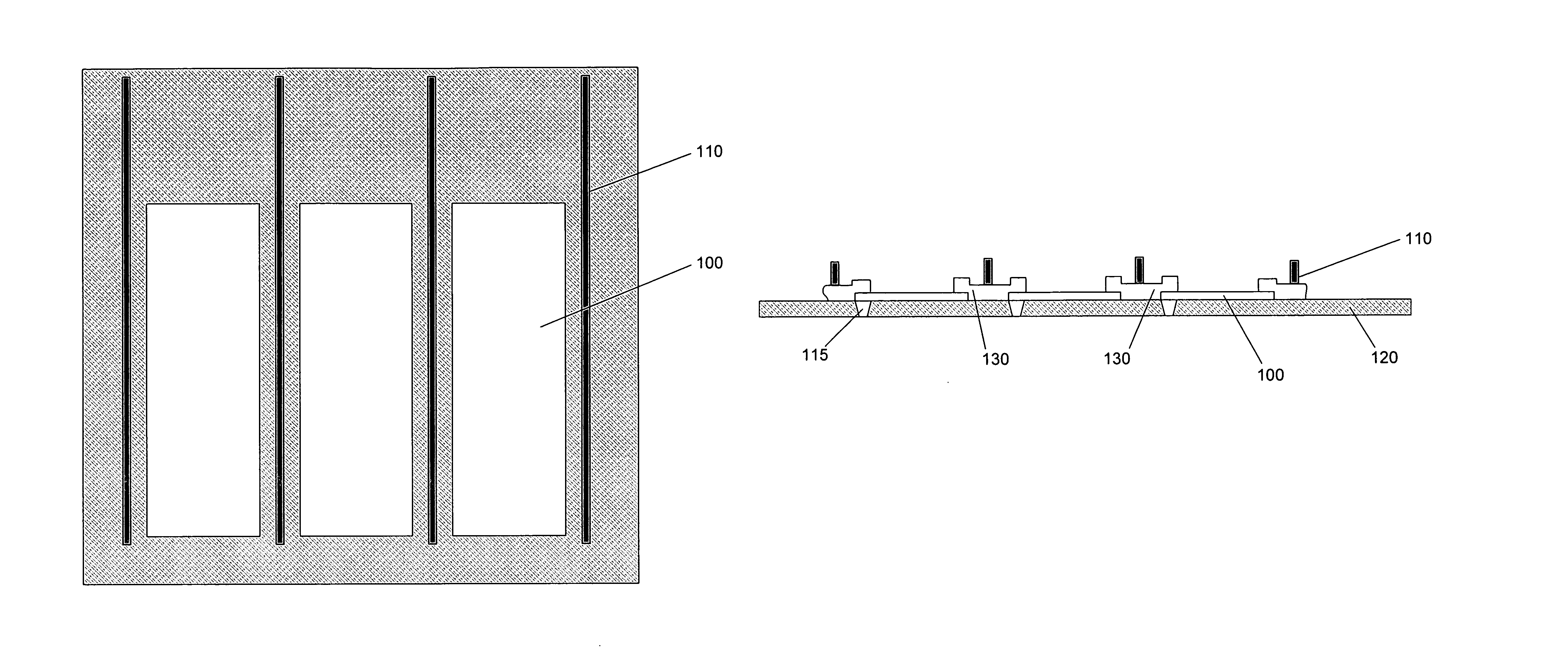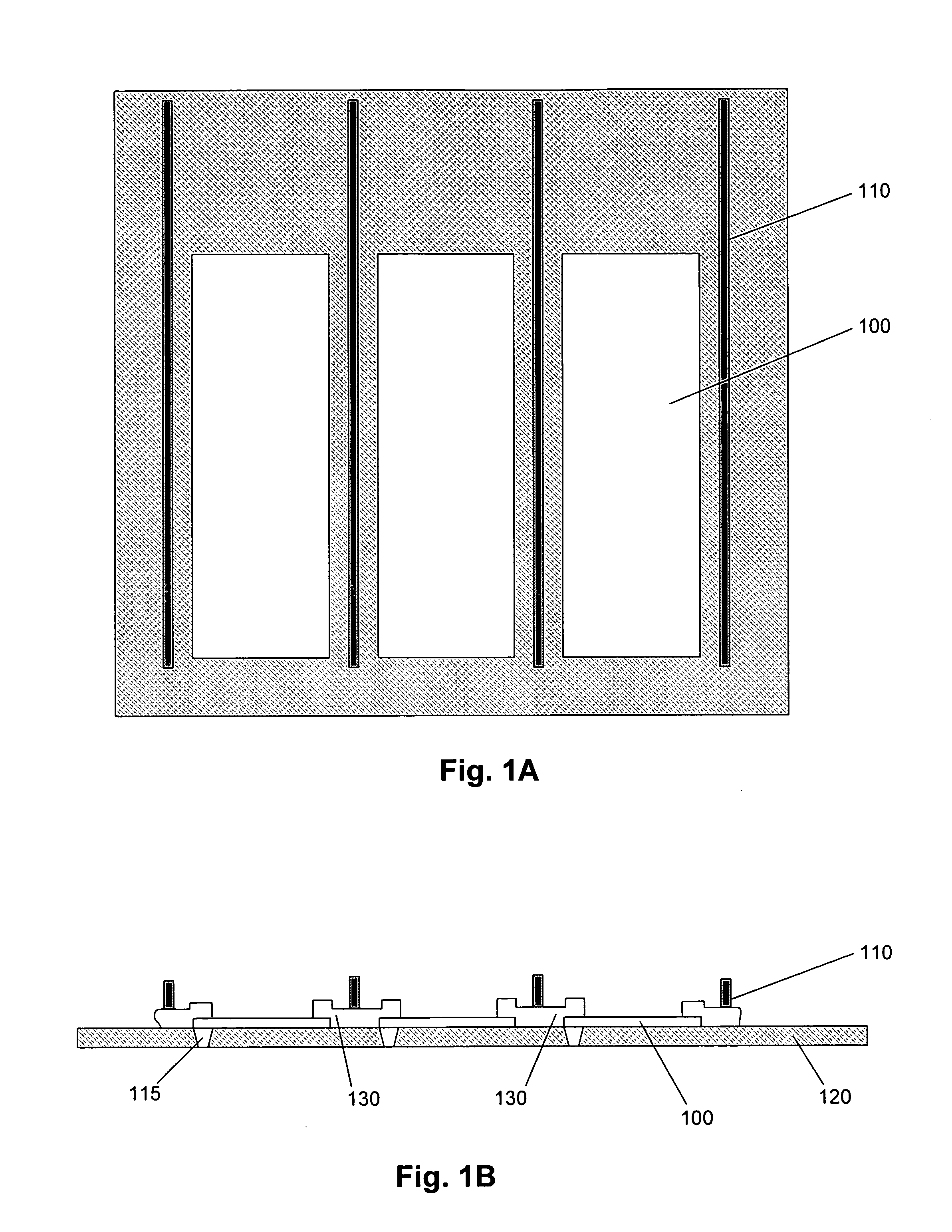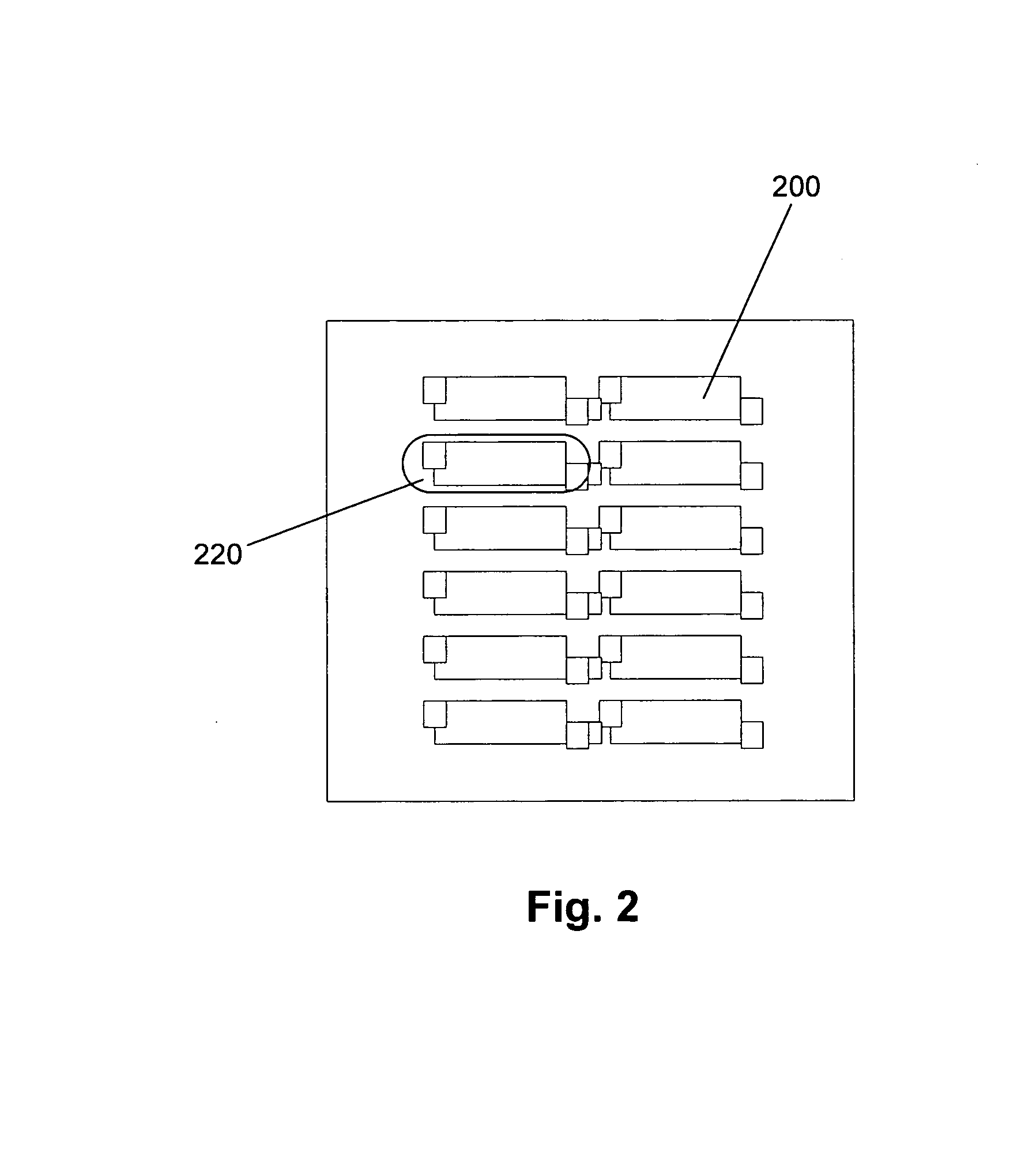Pixel intensity homogeneity in organic electronic devices
a technology of organic electronic devices and homogeneous pixel intensity, which is applied in the manufacture of electrode systems, electric discharge tubes/lamps, discharge tubes luminescnet screens, etc., can solve problems such as leakage current through devices, and achieve the effects of improving pixel intensity homogeneity, widening channel width, and large well siz
- Summary
- Abstract
- Description
- Claims
- Application Information
AI Technical Summary
Benefits of technology
Problems solved by technology
Method used
Image
Examples
Embodiment Construction
[0014]An organic device substrate is provided with a larger well size or wider channel width as compared to an emission area. This improves the effective aperture ratio, which improves the pixel intensity homogeneity.
[0015]In the fabrication of a display, such as an OLED display, the OLED layer stack is deposited on an electrode on the substrate. The electrode may be the anode and may comprise indium tin oxide (ITO). Desirably, the deposited films are of uniform thickness over the entire active area of the electrode. If the films are not uniform, then areas that are thicker will not emit light, and areas that are too thin may emit light in a less than optimum efficient way (power loss) and / or result in leakage current leaks through the device in a way that does not generate photons.
[0016]FIG. 1A is an overhead schematic diagram of an exemplary structure showing channel type wells in accordance with the present invention, and FIG. 1B is a cross-sectional view of the exemplary structu...
PUM
 Login to View More
Login to View More Abstract
Description
Claims
Application Information
 Login to View More
Login to View More - R&D
- Intellectual Property
- Life Sciences
- Materials
- Tech Scout
- Unparalleled Data Quality
- Higher Quality Content
- 60% Fewer Hallucinations
Browse by: Latest US Patents, China's latest patents, Technical Efficacy Thesaurus, Application Domain, Technology Topic, Popular Technical Reports.
© 2025 PatSnap. All rights reserved.Legal|Privacy policy|Modern Slavery Act Transparency Statement|Sitemap|About US| Contact US: help@patsnap.com



